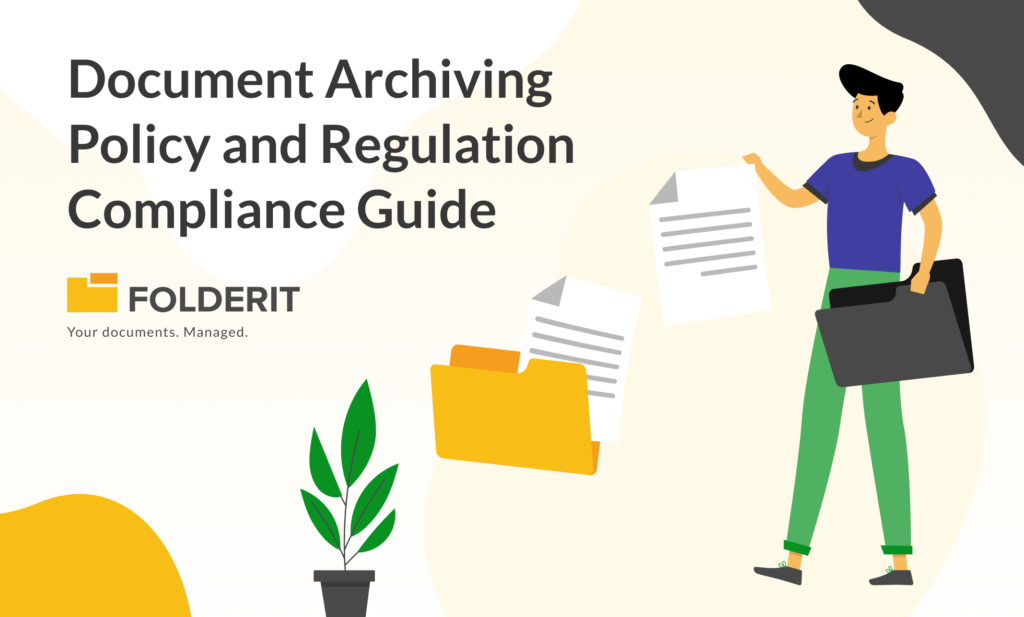Every day, companies accumulate new data, adding to the vast amounts of information stored within various IT systems like ERP and CRM. This data, while abundant, does not automatically translate into actionable insights. It requires a strategic approach to unlock its potential, improving processes, enhancing customer satisfaction, and driving business success.
A data strategy is a meticulously crafted plan aimed at harnessing this potential, designed to streamline the collection, storage, analysis, and utilization of data, thereby transforming it into a strategic asset.
Understanding Data Strategy
A data strategy is not merely a collection of disparate actions but a coherent, goal-oriented plan that addresses how a company manages its data. It seeks to tackle common challenges such as siloed data and inefficient data management practices, aligning these efforts with the broader business strategy, governance, compliance, and security frameworks.
The Criticality of a Robust Data Strategy
In a competitive landscape such as today, a strong data strategy is indispensable. It equips companies with the agility to maintain an edge in their markets. A well-conceived data strategy enables improved decision-making, risk minimization, and the uncovering of new business avenues. It also simplifies data protection, security, and cross-departmental collaboration.
The role of data management within companies has grown significantly, leading to the emergence of positions like the Chief Data Officer (CDO). While some companies have already embraced this role, recognizing the importance of a structured approach to data, others are yet to fully leverage their data effectively.
Transitioning to a Data-Driven Company
Despite many organizations embarking on big data projects and experimenting with new tools, the increasing complexity and volume of data require a clear, strategic approach. A data strategy roadmap offers this clarity, optimizing resource use and focusing efforts on the most impactful projects.
Before detailing your initiative, assess your current analytics maturity level. According to Gartner's Analytic Ascendancy Model, data maturity evolves through stages from descriptive and diagnostic to predictive and prescriptive analytics. Identifying your company's current stage allows for the setting of realistic goals and taking measured steps towards becoming more data-driven.
Developing a Data Strategy Roadmap
The development of a data strategy roadmap necessitates a pragmatic approach, involving all employees to ensure comprehensive understanding and participation. Collaboration across different departments, guided by someone with experience in data processing and an understanding of the company’s strengths and weaknesses, is key. External experts may also be called in to lend their expertise.
Step 1: Articulate Your Vision
- Understand Your Market: Begin by thoroughly analyzing your current market situation and how your business model operates within this context. Identify both the challenges and opportunities presented by your market.
- Engage Stakeholders: Conduct workshops or interviews with employees and management to capture their aspirations for the company's future. This collective vision should guide the development of your data strategy.
- Set Specific Goals: Define clear, specific goals you aim to achieve with your data strategy. These should align with your business objectives and address both short-term wins and long-term strategic aims. Make these goals SMART (Specific, Measurable, Achievable, Relevant, Time-bound) to facilitate tracking and accountability.
Step 2: Identify Data Sources
- Conduct a Data Audit: Perform an exhaustive audit of all data sources currently used or available to your organization, including both internal and external sources. This step should reveal data silos and opportunities for better data integration.
- Assess Data Accessibility: Evaluate whether the identified data sources are readily accessible across departments, aiming to eliminate silos and promote a unified data environment.
- Evaluate Data Security: Review the current state of data protection and security measures to ensure compliance with regulations and safeguard against breaches.
Step 3: Defining Integration Points
- Map Data Flows: Create a detailed map of how data moves within your organization, identifying key integration points between different data types and sources. This map will guide the integration process.
- Tool Selection: Based on the integration needs, select tools and platforms that facilitate the seamless merging of structured and unstructured data, ensuring new insights can be generated efficiently.
- Utilize Insights for Profitability: Develop strategies on how the integrated data and new insights can be used to drive profitability, such as improving operational efficiency or enhancing customer experiences.
Step 4: Tools for Data-Supported Decision-Making
- Identify Analytical Needs: Determine the specific analytical tools and capabilities required to transform data into actionable intelligence. This could range from basic data visualization tools to advanced predictive analytics platforms.
- Expert Input: Collaborate with subject matter experts and data scientists to select the appropriate tools that align with your strategic objectives and can handle the complexity of your data.
Step 5: Planning the Implementation
- Develop an Implementation Plan: Outline a comprehensive plan detailing how the data strategy will be put into action. This plan should include timelines, resource allocation, and specific projects or initiatives.
- Technology Deployment: Determine whether new technologies need to be purchased or developed in-house. This decision should be based on a thorough analysis of existing capabilities versus the requirements identified in the earlier steps.
- Skills and Training: Assess the current skill levels within your organization and identify gaps that need to be addressed through training or hiring. Plan for workshops or training sessions to enhance data literacy across the organization.
Step 6: Formulating the Data Strategy
After meticulously navigating through the initial steps of assessing the current data landscape, identifying data sources, integrating data points, selecting the right tools, and planning for implementation, the next crucial step is to formulate a comprehensive data strategy. This is where all the preparatory work and insights converge into a strategic document that outlines how the organization will use its data to achieve its business objectives.
Key Considerations for Formulating the Data Strategy
- Designing Analysis Processes: Determine who within the organization will be responsible for designing the data analysis processes. This involves identifying the team members or departments with the requisite expertise to develop effective analysis methodologies that can extract valuable insights from the data.
- Conducting the Analyses: Decide who will conduct the analyses based on the designed processes. This could involve data scientists, data analysts, or other specialists skilled in interpreting data and turning it into actionable intelligence.
- Delivery Format of Results: Establish the format in which the analysis results will be delivered to ensure they are accessible and understandable to all relevant stakeholders. This could range from detailed reports and dashboards to presentations or interactive visualizations, depending on the audience's needs.
- Data Analysis Workflows: Outline what the data analysis workflows will look like, including how data will be collected, processed, analyzed, and reported. This should include the tools and platforms that will be used at each stage of the workflow to ensure efficiency and accuracy.
- Project Responsibilities: Clearly delineate who handles each part of the data strategy project, from data collection and management to analysis and reporting. Assigning specific responsibilities ensures accountability and helps keep the project on track.
Execution: Bringing the Roadmap to Life
Execution is the phase where planning transitions into action. This crucial stage involves:
- Activating Cross-Departmental Collaboration: Success hinges on cohesive effort across various departments, ensuring that the strategy's execution is harmonized with the organization’s broader goals.
- Leadership Oversight: Assigning a dedicated leader, such as a Chief Data Officer, to oversee the roadmap’s implementation can ensure alignment and accountability across the organization.
- Resource Allocation: Ensuring adequate resources, including technology, personnel, and budget, are allocated towards the initiatives outlined in the roadmap.
Establishing Robust Data Governance
Data governance lays the foundation for managing the organization’s data assets responsibly and efficiently. This phase involves:
- Developing Policies and Procedures: Crafting comprehensive data management policies and procedures to govern data access, quality, privacy, and security.
- Ensuring Compliance: Regular compliance checks and audits should be conducted to adhere to regulatory standards and internal policies, safeguarding the organization against data breaches and other risks.
Fostering a Data-Driven Culture
Cultivating a data-driven culture is essential for the sustained success of the data strategy. This involves:
- Promoting Data Literacy: Implementing training programs to enhance data literacy across the organization, enabling employees to make informed decisions based on data.
- Encouraging Data Utilization: Creating an environment that encourages the use of data in day-to-day decision-making processes, ensuring that data becomes a core component of the organizational ethos.
Monitoring Performance in Your Data Strategy
To ensure the success and continual improvement of your data strategy, it’s crucial to have mechanisms in place for monitoring its performance. Here’s how you can achieve this:
- Establish Key Performance Indicators (KPIs): Identify and define clear KPIs that are directly aligned with the objectives of your data strategy. These KPIs will serve as benchmarks for assessing progress and evaluating the strategy’s impact on achieving business goals.
- Ensure Data Quality and Security: Implement routine reviews and audits to verify the effective execution of the data strategy while maintaining high standards of data integrity and security. This ensures that the data remains reliable and trustworthy.
- Review and Adjust Regularly: The data landscape and business objectives evolve, necessitating regular reviews of the data strategy to ensure it remains relevant. Adjustments should be made to reflect new insights, technological advancements, or shifts in business priorities.
- Create Governance and Compliance Structures: Develop comprehensive governance frameworks to oversee data management practices, ensuring they comply with legal standards and minimize risks. This includes setting up policies for data usage, storage, and sharing.
- Engage Stakeholders Continually: Maintaining open channels of communication with stakeholders is vital. Their feedback can provide valuable insights for refining the data strategy, ensuring it meets the needs and expectations of all parties involved.
The Role of Document Management in Data Strategy
A Document Management System (DMS) is instrumental in enhancing the effectiveness of your data strategy. Here’s how:
- Managing Data Lifecycle: A DMS oversees the entire lifecycle of documents, converting unstructured data into organized, accessible formats. This process includes capturing, indexing, and storing data, facilitating easier retrieval and analysis.
- Automating Workflows: Automation tools within a DMS streamline data management processes, reducing manual effort and minimizing errors. This efficiency allows for quicker decision-making and ensures that critical information reaches the right people at the right time.
- Ensuring Regulatory Compliance and Data Integrity: With features like rights-based access and comprehensive audit logs, a DMS helps ensure that data management practices comply with regulatory standards. This is crucial for maintaining data privacy, security, and integrity.
- Adapting to Regulatory Changes: The agility of a DMS allows for quick adaptation to new regulations or laws, ensuring that your data strategy remains compliant over time. This adaptability is essential in a landscape where data privacy regulations are continually evolving.
Conclusion
Developing and implementing a data strategy roadmap is a complex, yet rewarding endeavor that requires careful planning, cross-functional collaboration, and a commitment to continuous improvement. By following the steps outlined and adapting to new challenges and opportunities, organizations can ensure that their data strategy remains a powerful tool for achieving business objectives, driving innovation, and maintaining competitive advantage in the digital age.
The journey towards becoming a truly data-driven organization is ongoing, and the data strategy roadmap serves as a critical guide, ensuring that every step taken is in alignment with the overarching vision and goals of the organization.



